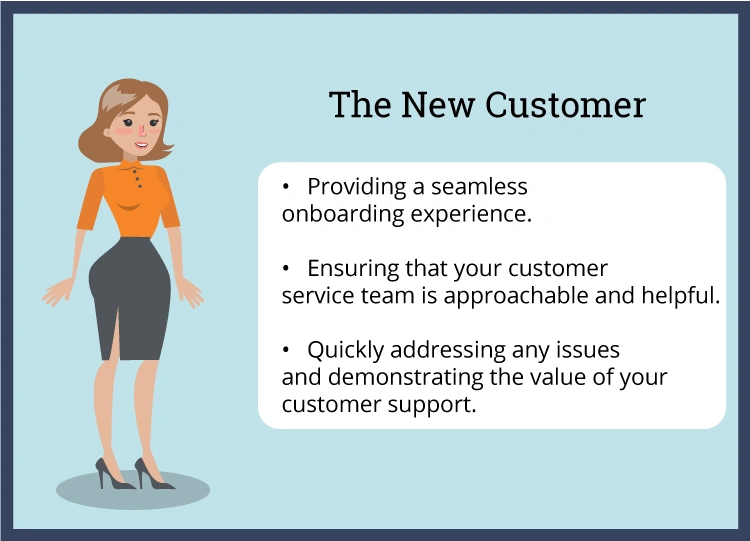Each customer comes with their own set of expectations, preferences, and communication styles. By identifying and understanding these different types of customers, businesses can tailor their support strategies to meet diverse needs effectively.
Recognizing the various types of customers your business interacts with is a fundamental skill for creating effective customer support strategies. Different buyers have different needs, and understanding these needs allows your company to tailor its approach, improving customer satisfaction and retention rates.
By identifying and categorizing customer types, businesses can streamline communication processes, develop personalized marketing tactics, and enhance the overall customer service experience.
What are the Ten Types of Customers?
1. The Prospective Customer
Prospective customers are at the initial stages of your sales funnel. They are still evaluating their options and considering whether your product or service meets their needs. They are often seeking detailed information about products, services, pricing, or promotions to help them make a decision.
To effectively support prospective customers, you need to understand their intentions and provide them with targeted information that helps them make informed decisions.
First, it’s important that agents are trained to recognize and respond appropriately to prospective customers, who often need additional information and reassurances.
Methods include providing detailed product or service demonstrations, testimonials from satisfied customers, and easy-to-understand comparison charts. Additionally, follow-up communications that ask if they need further information can be very effective in converting them from prospective to paying customers.
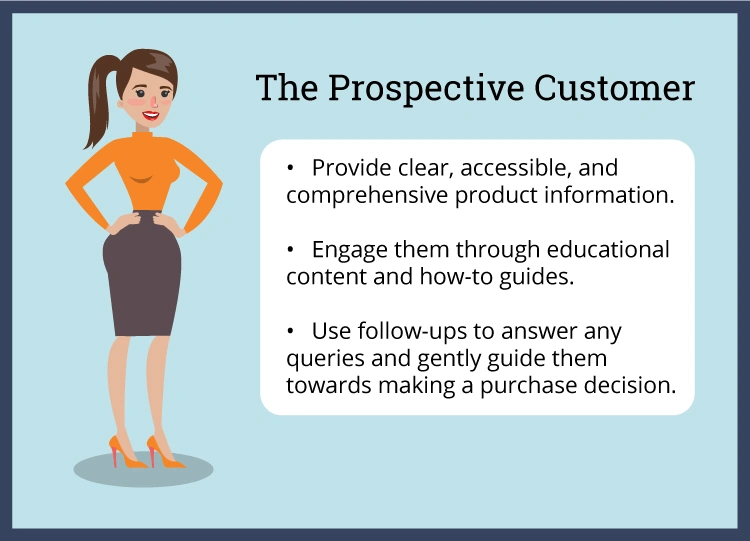
Additionally, follow-up communications that ask if they need further information can be very effective in converting them from prospective to paying customers.
2. The Indecisive Customer
Indecisive customers struggle to make a final decision. They often oscillate between options and might seem perpetually unsure about the benefits of your product. They often seek extensive information and reassurance and may ask many questions, request comparisons, and take a long time to weigh their options.
Indecisive customers require patience and skill to support. To assist them effectively, offer clear, concise options and recommendations. Use your expertise to guide them towards making a decision that aligns with their needs.
Bullet points detailing product benefits or simplified service plans help in reducing their decision-making burden. Also, providing a risk-free trial period or a flexible return policy may alleviate their concerns about making the wrong choice.
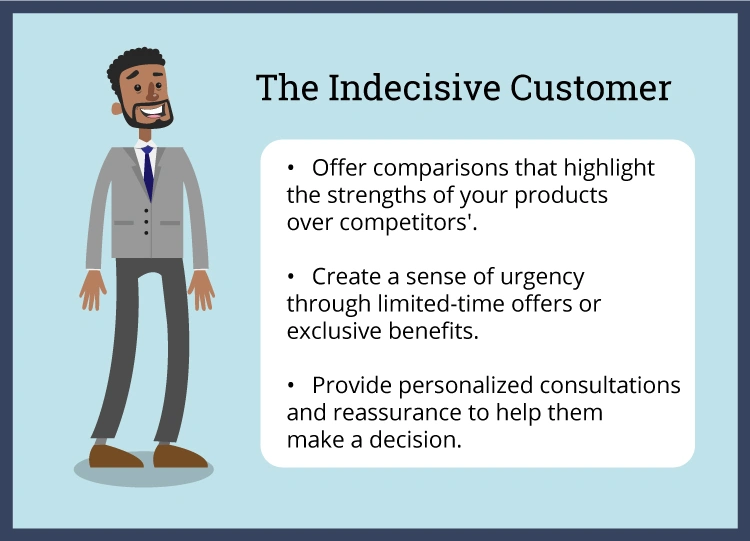
3. The Loyal Customer
Loyal customers are a cornerstone of any business. The loyal customer repeatedly purchases from a brand and often advocates for it. They have a strong emotional connection and trust in the products or services offered. This customer values consistent quality and excellent customer service, often providing valuable feedback and referrals.
Supporting loyal customers is crucial as they are your brand ambassadors. Firstly, always recognize their loyalty, possibly through a loyalty program that rewards repeat purchases or referrals. Personalized communication, like sending them birthday or anniversary messages, also goes a long way. Additionally, giving them exclusive access to new products or services before a wider release can make them feel valued and deepen their loyalty.
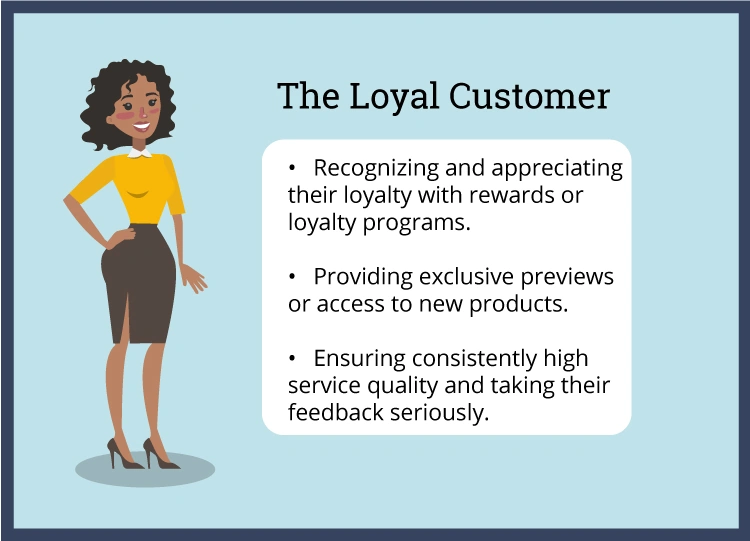
4. The Referred Customer
The referred customer comes to the business through recommendations from existing customers. They typically have a positive predisposition and a level of trust in the brand due to the referral source. They also usually have high expectations based on the praise they've heard.
Referred customers come with built-in expectations that need to be met or exceeded. Since their first impression is heavily influenced by the person who gave the referral, ensure they receive top-notch service from the start.
Acknowledge the referral during their initial interaction, and consider offering a special discount or promotional offer as a welcoming gesture. This not only serves to validate the trust the referrer has in your business but also sets a positive tone for the new relationship.
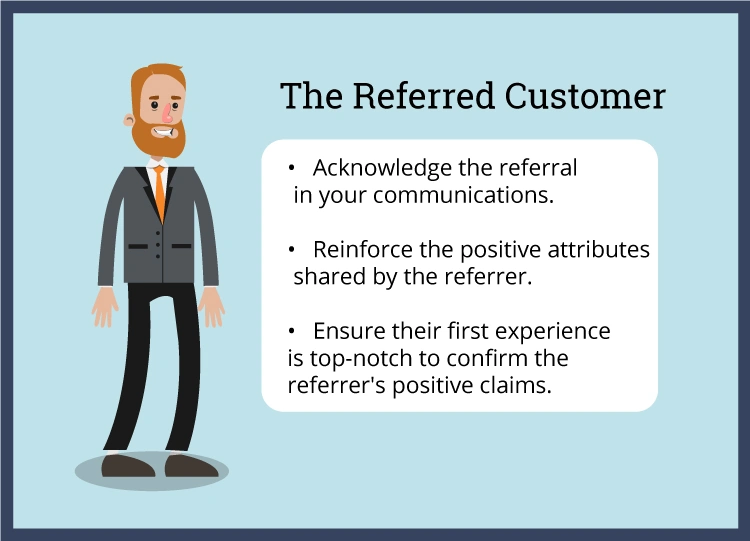
5. The Price-Sensitive Customer
The price-sensitive customer prioritizes cost above other factors and actively seeks out the best deals and discounts. They are quick to compare prices and may switch brands for a better bargain.
Price-sensitive customers are primarily focused on getting the best value for their money. To support these customers effectively, clear communication about pricing, discounts, and the overall value proposition is essential.
Showcasing how your product or service provides a better deal or greater benefits than competitors is key. Additionally, ensuring that special promotions are highly visible and explaining any loyalty schemes or bulk discounts can help in securing their business.
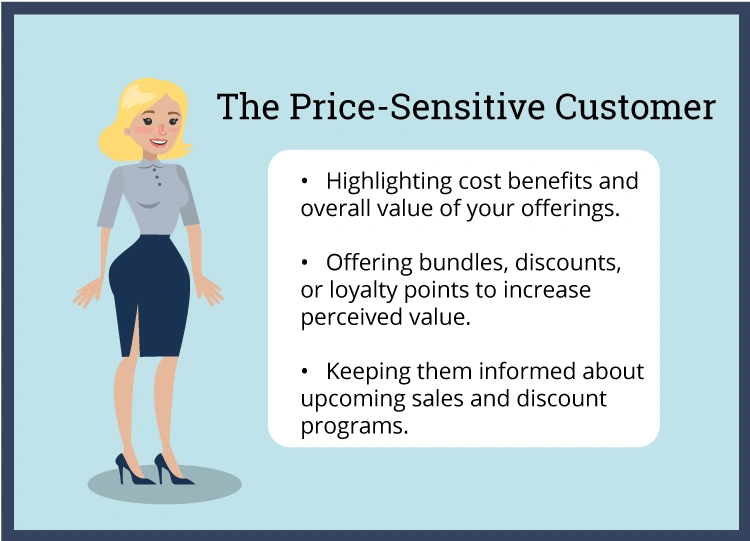
6. The Promotion-Driven Customer
The promotion-driven customer is highly responsive to special offers, sales, and discounts. They are often motivated by the fear of missing out on a good deal and may make purchases they wouldn't otherwise consider. They are likely to purchase only when incentivized by a deal.
Promotion-driven customers are attracted by deals, discounts, and limited-time offers. To support these customers, maintain an updated and easily accessible list of current promotions and make sure your team is well-versed in the details.
Highlighting the benefits of these promotions during interactions can encourage quicker purchasing decisions. Furthermore, setting up alerts or notifications for upcoming promotions can keep these customers engaged and likely to make repeat purchases.
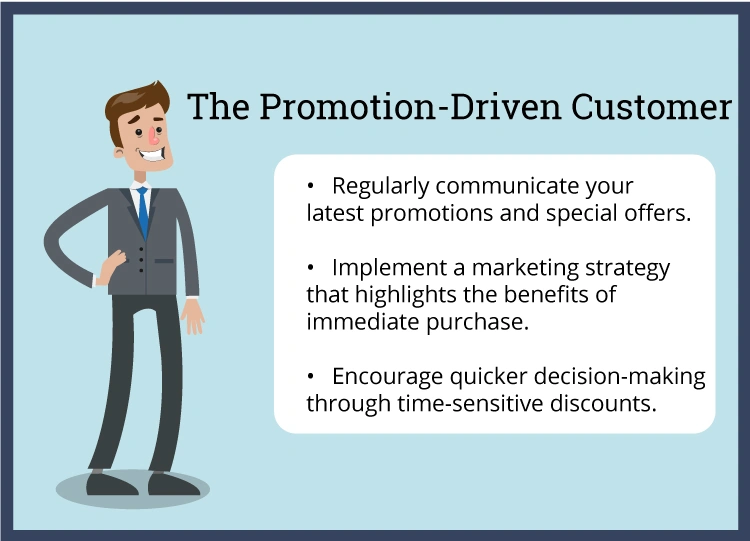
7. The Dissatisfied Customer
The dissatisfied customer has had a negative experience with your product or service and is often vocal about their disappointment. They may leave negative reviews or contact customer service with complaints.
Handling dissatisfied customers requires exceptional patience, empathy, and proactive problem-solving skills.
Listen attentively to their concerns without interruption, acknowledge their dissatisfaction, and apologize sincerely. Offer a swift and fair resolution and, if possible, exceed their expectations to turn their negative experience into a positive one. Consistently follow up to ensure they are satisfied with the resolution and use their feedback constructively to improve your products or services.
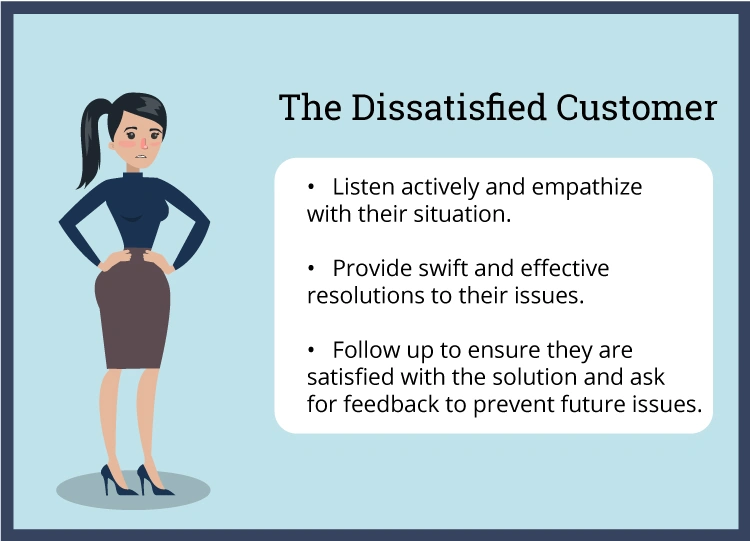
8. The Impulse Customer
The impulse customer makes quick, unplanned purchases based on sudden urges or spontaneous desires. They are often drawn to eye-catching displays, limited-time offers, and easy checkout processes.
Impulse customers make quick decisions, often driven by emotion rather than deliberation. To effectively support them, streamline the purchasing process to make it quick and hassle-free.
Product highlights and benefits should be prominent and exciting, capturing their interest immediately. Additionally, suggest complementary products or services to increase their satisfaction and overall order value.
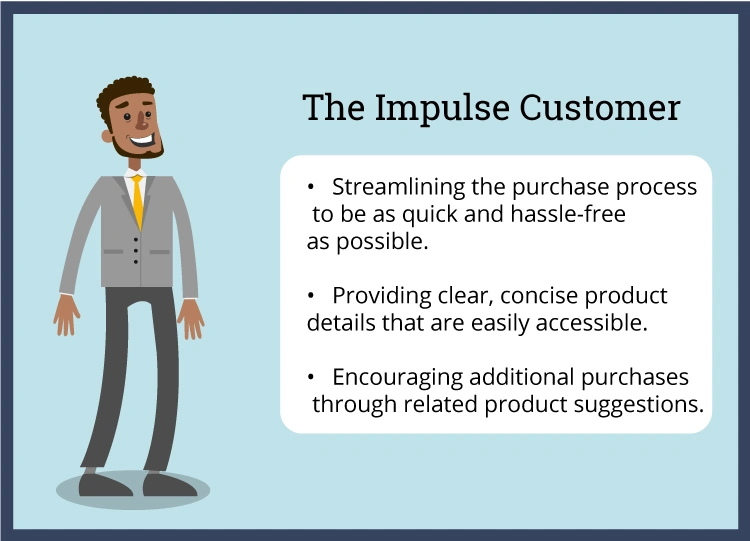
9. The High-Expectation Customer
The high-expectation customer demands superior quality, excellent service, and personalized experiences. They are often well-informed and have specific requirements. High-expectation customers often require more attention than the average customer.
High-expectation customers demand premium service and often scrutinize the finer details. To exceed their expectations, ensure that every interaction is flawless and personalized.
Implement a high standard of service delivery, from initial contact through to after-sales support. Regular training for staff in handling complex queries and offering quick, effective solutions is crucial. Moreover, regular, personalized updates about products, services, or policy changes can keep these customers satisfied and loyal.
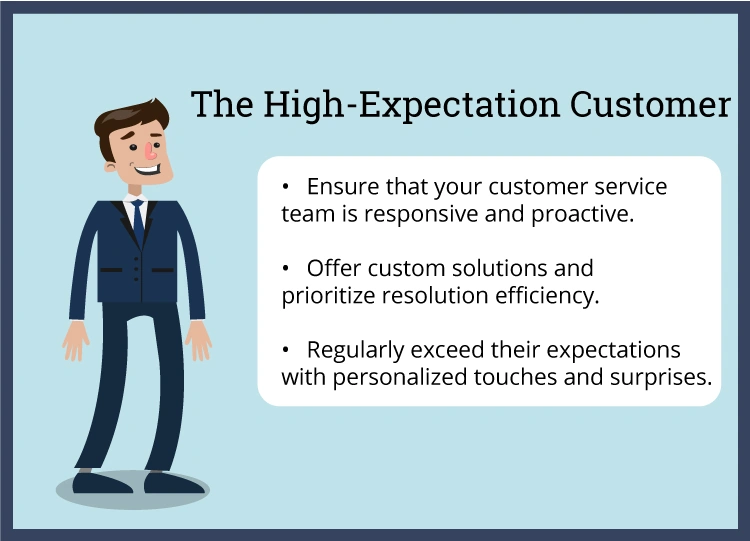
10. The New Customer
The new customer is purchasing from your brand for the first time. They may be unfamiliar with the products, services, or processes. They are in the process of forming an opinion about your brand.
For new customers, a clear, friendly, and informative onboarding process is essential for a strong start to the relationship.
Welcome them with personalized emails or calls, provide comprehensive resource packs that include FAQs, tutorials, and best practices, and invite them to webinars or other events that will help them get the most out of your services.
Ensuring that new customers feel supported and informed from the outset can lead to long-term engagement and satisfaction.
